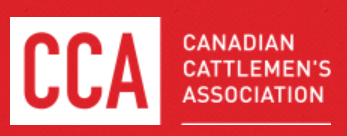Source: Canadian Cattlemen’s Association
Canada’s cattle producers stepped up to the plate again in 2018, submitting primarily through deadstock collection operators 30,949 eligible cattle to the national bovine spongiform encephalopathy (BSE) surveillance program, none of which tested positive for BSE. While nationally, Canada is meeting its BSE surveillance targets, efforts continue to enable awareness which can result in increased sample collection directly at the farm level to further demonstrate active producer participation in Canada’s BSE surveillance program.
Maintaining a credible level of BSE surveillance to demonstrate that Canada’s control measures are effective and are working towards eradicating the disease is important, and particularly so this year. Canada will prepare an application to the World Organisation for Animal Health (OIE) to upgrade its BSE risk status to negligible risk from the current controlled risk. Under OIE guidelines, 2019 is the earliest Canada can apply for a status upgrade following the most recent confirmation of BSE in Canada, case No. 19 in February 2015.
In terms of process, as an OIE Member Country, Canada must submit information to support its application for official recognition of negligible risk status for BSE. Canada has robust controls and surveillance measures in place to prevent the spread of the disease and detect the small and declining number of cases that are expected to occur from time to time. To verify that Canada’s control measures comply with Chapter 11.4 of the OIETerrestrial Code, the OIE performs a risk assessment and requests information for the past seven years in three main areas: regulatory controls, communication, and surveillance. Questions arising from the OIEs initial review of Canada’s submission will be addressed by the CFIA in a process over the summer. In November, a working group from the OIE will evaluate the application and the OIE scientific committee will provide their recommendation in February of 2020.
Canada will need to continue to meet surveillance targets to maintain its current status and support the application to the OIE to upgrade to negligible BSE risk status. Canada’s suite of BSE surveillance measures will also need to be maintained going forward. Negligible risk is the OIE’s lowest BSE risk level status. A successful application for a status upgrade may carry the potential to scale back to a normal level of surveillance (Canada’s current target number of 30,000 annual samples was established in 2003); however, it would not absolve Canada of the responsibilities of surveillance altogether.
The 2018 result is commendable as, due to Canada’s shrinking herd and other chronic challenges, 2013 was the last time the 30,000 sample testing target was surpassed. Further, in spite of challenges and contributing factors including identifying qualifying animals in a timely manner, a much younger herd now than in 2003, and higher market values for cull cows, annual national numbers have been consistent and continue to edge higher.
Producers should be proud of their strong efforts to meet Canada’s targets, understanding it is crucial that testing continue to grow across the country, particularly sample collection at the farm level to demonstrate their awareness of, adherence to and participation in Canada’s BSE surveillance program.
Canada’s cattle producers are encouraged to submit at least one cow per year for sampling. Cattle between 30 months and 10 years of age provide the most valuable information in terms of monitoring the cattle population for BSE. However, any animal older than 30 months of age that fits into one of the categories of dead, down, dying or diseased is a potential candidate for testing. The National BSE Surveillance Program provides reimbursement for eligible samples to the producer for assisting in disposal costs and/or to a private veterinarian, if involved.






